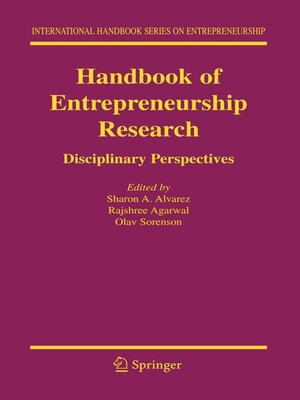Handbook of Entrepreneurship Research
ebook ∣ Disciplinary Perspectives · International Handbook Series on Entrepreneurship
By Sharon A. Alvarez

Sign up to save your library
With an OverDrive account, you can save your favorite libraries for at-a-glance information about availability. Find out more about OverDrive accounts.
Find this title in Libby, the library reading app by OverDrive.



Search for a digital library with this title
Title found at these libraries:
| Library Name | Distance |
|---|---|
| Loading... |
early economic thinkers and classic works such as Cantillon (1755), Knight (1921), and Kirzner (1973). The paper opens by explaining how uncertainty and thus entrepreneurship disappeared from microeconomic theory as it became increasingly formalized (and stylized). It then goes on to bring the entrepreneur and entrepreneurial decision-making back into economic theory by focusing on the interrelationships among actors, knowledge, and perceived economic opportunities using a resource-based framework. The third paper in this section (Chapter 4) is by Foss and Klein, "Entrepreneurship and the Economic Theory of the Firm: Any Gains from Trade?" Foss and Klein strongly link theories of the firm to entrepreneurship, arguing a fundamental and intrinsic connection between the two. They, like Mahoney and Michael, explain how entrepreneurship became less important in economic models as the general equilibrium model became dominant. Foss and Klein ask: Does the entrepreneur need a firm? They focus on the judgment of the entrepreneur and suggest that this judgment is exercised through asset ownership and starting a firm. Foss and Klein further argue that it is through this notion of judgment that heterogeneous assets combine to meet future wants.







